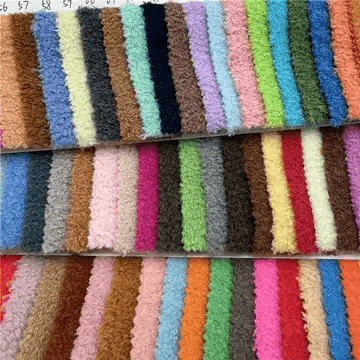Selecting the right fabric is key to creating a custom plush toy that’s both charming and functional. The material affects everything from the toy’s texture and durability to its suitability for different ages and uses—making Choosing Fabrics for Custom Plush Toys a decision that shapes the final product’s appeal.

Common Fabrics for Plush Toys
Several fabrics stand out as go-to choices for custom plush toys. Minky is a top pick for its ultra-soft, velvety texture, perfect for cuddly companions. It comes in short and long piles, with the longer variety adding a fluffy, luxurious feel. Cotton is another versatile option: breathable, easy to wash, and ideal for toys meant for babies or young kids, as it’s gentle on sensitive skin. Fleece offers warmth and affordability, with a smooth surface that works well for bold prints or simple designs. For a more unique look, sherpa—with its fuzzy, wool-like texture on one side—adds a cozy, rustic touch, great for animal-themed plushies. Understanding these options is a core part of Choosing Fabrics for Custom Plush Toys.

Factors to Consider When Choosing Fabric
The first factor in Choosing Fabrics for Custom Plush Toys is the toy’s intended use. If it’s for a baby, prioritize hypoallergenic, machine-washable fabrics like cotton or organic minky to ensure safety and easy cleaning. For a decorative plush meant to sit on a shelf, you might opt for a more delicate fabric like long-pile minky, which adds visual drama but isn’t as durable for rough play. Durability is another key consideration: fleece and short-pile minky hold up well to frequent handling, while cotton can withstand multiple washes without losing its shape. Finally, think about the design—fabrics with stretch, like fleece, work better for curved shapes, while stiffer materials may suit structured details like ears or tails.

Matching Fabric to Plush Toy Personality
The fabric should align with the toy’s “personality,” a crucial aspect of Choosing Fabrics for Custom Plush Toys. A playful, energetic character might shine in bright, printed fleece, while a calm, comforting plush could benefit from the softness of minky. For a realistic animal plush, sherpa can mimic fur, adding authenticity, while cotton’s crispness is ideal for toys with embroidered details or bold patterns. Don’t forget about texture contrast—combining minky for the body with a smooth cotton for accents like a bow or belly can make the design pop.

Tips for Testing and Selecting Fabric
Before committing, request fabric samples to feel the texture and check how they hold color (some materials absorb dyes better than others)—a practical step in Choosing Fabrics for Custom Plush Toys. Test the fabric’s stretch and durability by gently pulling it—this helps avoid choosing something that might tear easily. If the toy has small parts like eyes or buttons, ensure the fabric is thick enough to securely attach them. For custom orders, work with a maker who can recommend fabrics based on your design, as their expertise can help balance aesthetics and functionality.

Choosing the right fabric transforms a custom plush toy from a simple design into a beloved companion. By considering texture, durability, and purpose in Choosing Fabrics for Custom Plush Toys, you’ll create a plushie that not only looks great but also stands the test of time—whether it’s hugged daily or displayed with pride.




